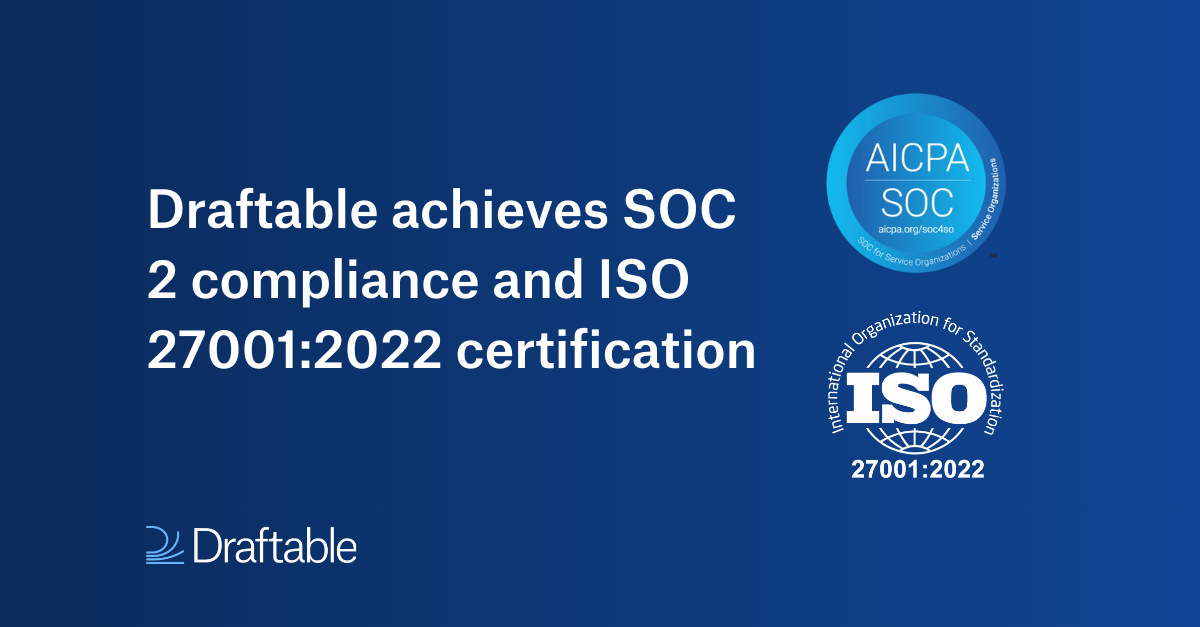
In moving from a practising lawyer and a legal tech user to a product specialist at Draftable, I’ve embarked on a journey to shape effective, user-centred tech for legal professionals. I know from direct personal experience how many law firms are tied up in cumbersome tasks and workflows, detracting from their core roles and impacting their job satisfaction. And while legal tech often promises a lot, the reality can be a frustrating misalignment with lawyers' true needs. At Draftable, our mission is to design technological solutions that truly understand lawyers' pain points and transform their work lives. We focus on using empathy-driven product design, promoting user-centred design, leveraging technology that has a clear purpose, and prioritizing simplicity. Here's to a more efficient, fulfilling future in the legal field.
My name is Yulia, I’m a Product Specialist at Draftable. But my career journey began as a Banking & Finance lawyer working for a top law firm in Australia. In this blog article, I want to share my personal story from my days as a lawyer to my current role in a tech company. Along the way, we'll uncover the "Why" behind legal tech, explore the challenges faced by legal professionals, and discover practical solutions that have the potential to empower lawyers to unleash their full potential.
Let's start with the "Why" behind legal tech, the dilemmas faced by legal professionals and how we can pioneer change by understanding and addressing these challenges.
The Legal Practice Dilemma: A Quest for Efficiency
In his book "Deep Work," Cal Newport highlights the need for professionals, including lawyers, to focus on cognitively demanding tasks that require deep thinking. Yet, in reality, many lawyers find themselves caught up in the minutiae of document-intensive workflows. The tasks that keep them from their core responsibilities often involve laborious formatting, document comparisons, OCR mishaps, and endless copy-pasting.
Many legal professionals experience these burdensome tasks, hindering productivity and job satisfaction. It's a challenge that persists across the legal landscape. This issue frequently goes unaddressed. It is simply dismissed as an inevitable reality of being a lawyer. However, a new generation of lawyers appear to be refusing to accept this status quo. They aspire to engage in complex problem-solving, to fully utilise their legal acumen. When law firms don’t provide this opportunity, these young professionals seek new horizons, often leaving the legal field entirely.
Despite the Buzz: The Underserved Legal Professional
Transitioning from the legal world to legal tech, I have realized there's a glaring gap between what technology promises and what lawyers actually experience. Despite the buzz about AI and tech advancements, lawyers continue to grapple with unsexy, manual tasks that impede their core work.
The challenges transcend mere productivity concerns; they delve deep into job satisfaction and the overall well-being of legal practitioners. This is a problem demanding a solution, and it is this very problem that has guided our journey.
How to make better Legal Tech: Lessons from My Legal Journey
My journey from lawyer to legal tech advocate has taught me valuable lessons. At Draftable, we believe in the power of empathy-driven product design, and these lessons have become the cornerstone of our approach to transforming the legal tech landscape.
Lesson 1: Prioritizing User-Centered Design
Effective product design starts with understanding the users. User research, empathy-building activities, and involving end-users in the design process are key steps. Product design bridges tech and emotions by focusing on the real pain points, sometimes requiring observation to truly understand.
Listening to the voices of lawyers is paramount. It requires us to be receptive to their feedback, even when it highlights the shortcomings of our own products. This empathetic approach often demands observation of lawyers in their natural work environment. It's about witnessing firsthand the tedious tasks they endure and acknowledging that these pain points are real.
More than ever, we need to focus on the actual pain points to bring about change. It's about rethinking and reshaping outdated processes while preserving and iterating on what remains viable. The user experience should be at the forefront of every design decision, ensuring that the technology we create aligns with the real needs of legal professionals.
Lesson 2: Leverage Technology with Clear Purpose
Technology should have a clear purpose aligned with the actual pain points of legal professionals. The "how" and "why" of implementing new technology often remain elusive. Improtantly, tech should adapt to lawyers – otherwise it is the lawyers and the firm that pay the high price (literally and figuratively).
One of the significant challenges in this space is around misalignment between the capabilities of technology and the demands of legal work. Oftentimes technology promises more than it can deliver in the legal context. To truly make a difference, we've learned solutions should be meticulously designed and implemented with a deep understanding of the intricacies of legal work.
Our approach is to bridge the gap between technology and legal workflows by ensuring that the technology we create serves a clear purpose – to simplify, enhance, and streamline legal processes. By understanding the precise pain points of lawyers, we can provide technology that not only meets but exceeds their expectations.
Lesson 3: Going for Simplicity
Simplicity is often undervalued in the world of legal tech. Yet, it is the key to unlocking efficiency and user adoption. While technology has the potential to transform workflows, it often necessitates a complete rethink of existing processes. Legacy systems and ingrained practices can anchor our thinking, making it challenging to embrace change.
However, simplicity is the gateway to change. Our experience shows that working diligently to create user-friendly interfaces and intuitive workflows enables lawyers to quickly adopt new technology. The goal is to make the transition as seamless as possible, reducing the learning curve and ensuring that lawyers can focus on their core responsibilities.
Simplicity doesn't mean sacrificing functionality; rather, it means providing a clean and straightforward user experience that enhances productivity. It's about removing unnecessary complexity and delivering technology that feels like a natural extension of a lawyer's skills and expertise.
Outcome: Empathy + Innovation = Transformation
These lessons emphasize the fusion of empathy and innovation, which we believe can reshape the legal tech landscape. We understand the challenges of implementing new technology, and how it must align with legal workflows and solve real problems for lawyers. As a new entrant to the legal technology market, coupled with our extensive document processing expertise and over 12 years of experience in this area, Draftable has an opportunity to simplify intricate legal workflows. In building solutions for lawyers at Draftable, we draw on firsthand insights from the actual users - legal professionals, ensuring our solutions are both innovative and tailored to their needs.
We firmly believe that the key to unlocking the full potential of legal tech lies in bringing lawyers into the product design process. CIOs and legal tech teams at law firms have the power to alleviate the pain of their lawyers by prioritising solutions built with lawyers’ input. By collaborating with providers who focus on this empathetic approach, law firms can empower their legal professionals to do what they do best – practicing law.
Find out more about our legal document comparison solution, Draftable Legal, or book a demo by getting in touch with us.




.png)
